 This article comes to us from Andrea Giles, LTP Sports and Five Ten Athlete, Nutrition Expert and Trainer. Andrea teaches climbing at Seven Bays Bouldering, in Halifax, Nova Scotia, and is a strong proponent of healthy vegan eating. She stays in top physical condition while eschewing the gluten-dominant, and meat-heavy diets that many athletes rely on. We wanted her perspective on nutrition to help those who might be looking for ways to change their diets to reach their health and fitness goals.
This article comes to us from Andrea Giles, LTP Sports and Five Ten Athlete, Nutrition Expert and Trainer. Andrea teaches climbing at Seven Bays Bouldering, in Halifax, Nova Scotia, and is a strong proponent of healthy vegan eating. She stays in top physical condition while eschewing the gluten-dominant, and meat-heavy diets that many athletes rely on. We wanted her perspective on nutrition to help those who might be looking for ways to change their diets to reach their health and fitness goals.
Think about it- every single thing that you eat has to be processed by your body. Everything. From the spinach salad that you had with dinner last night to the slightly-stale donut that you’re still kinda regretting eating this morning. That fuel that you consume can either help or hurt you, simple as that. To get healthier and perform better, it’s important to focus on proper nutrition to fuel your body in the best possible way; to minimize the negative effects of unhealthy foods, and balance them with foods that make you stronger, fitter, healthier, and ready to crush some goals!
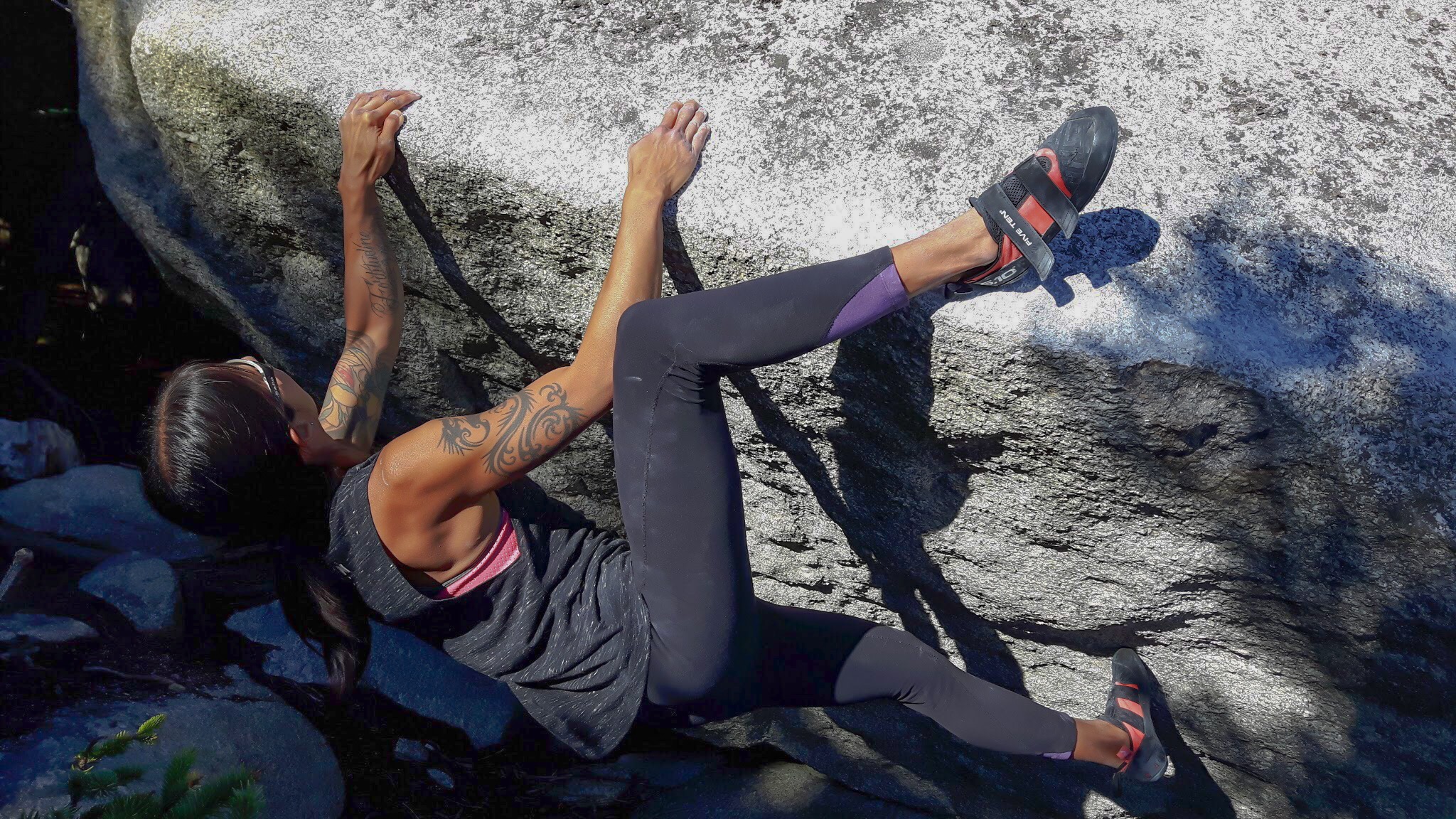
Healthy eating doesn’t have to be complicated, difficult, or a chore. You don’t have to make it your life’s goal or mantra to see the benefits, either. Even small changes will add up to some big improvements, so go easy on yourself and take pride in even the little steps you take. Most importantly: don’t get hung-up on the mistakes you make; holiday indulgences, or occasional treats shouldn’t discourage you! Getting your nutrition back on track is easy, and the results are worth it!
Here are my top 5 nutrition tips:
- Hydrate, hydrate, hydrate!
-
- Drink more water. The adult human body is approximately 50-65% water. That water regulates your internal temperature, metabolizes proteins and carbohydrates, it lubricates your joints and helps to remove toxins and wastes.
- How much should you drink? The quick and easy answer: 8 glasses of water per day. The more detailed answer: Take your weight in pounds, then divide it by 2. Drink that amount in ounces per day. If you’re active or working out, drink an additional 24 ounces for each hour you are active or working out. (8 ounces = 1 cup).
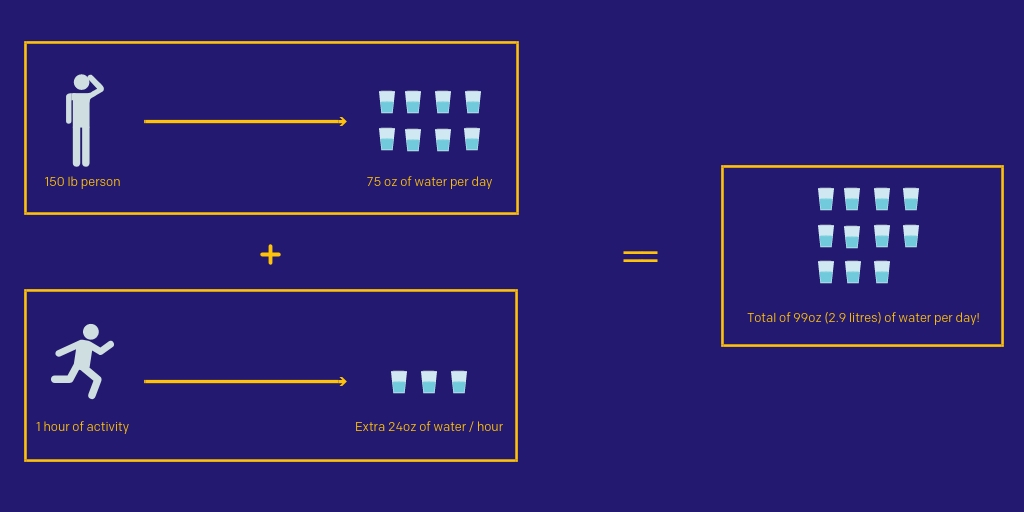
Yes, that’s a lot of water. Make it fun and tasty by infusing your water with fruits and/or herbs. Some of my favourites are berries and mint, or a mix of citrus slices.
- Eat clean, unprocessed (or minimally processed) foods
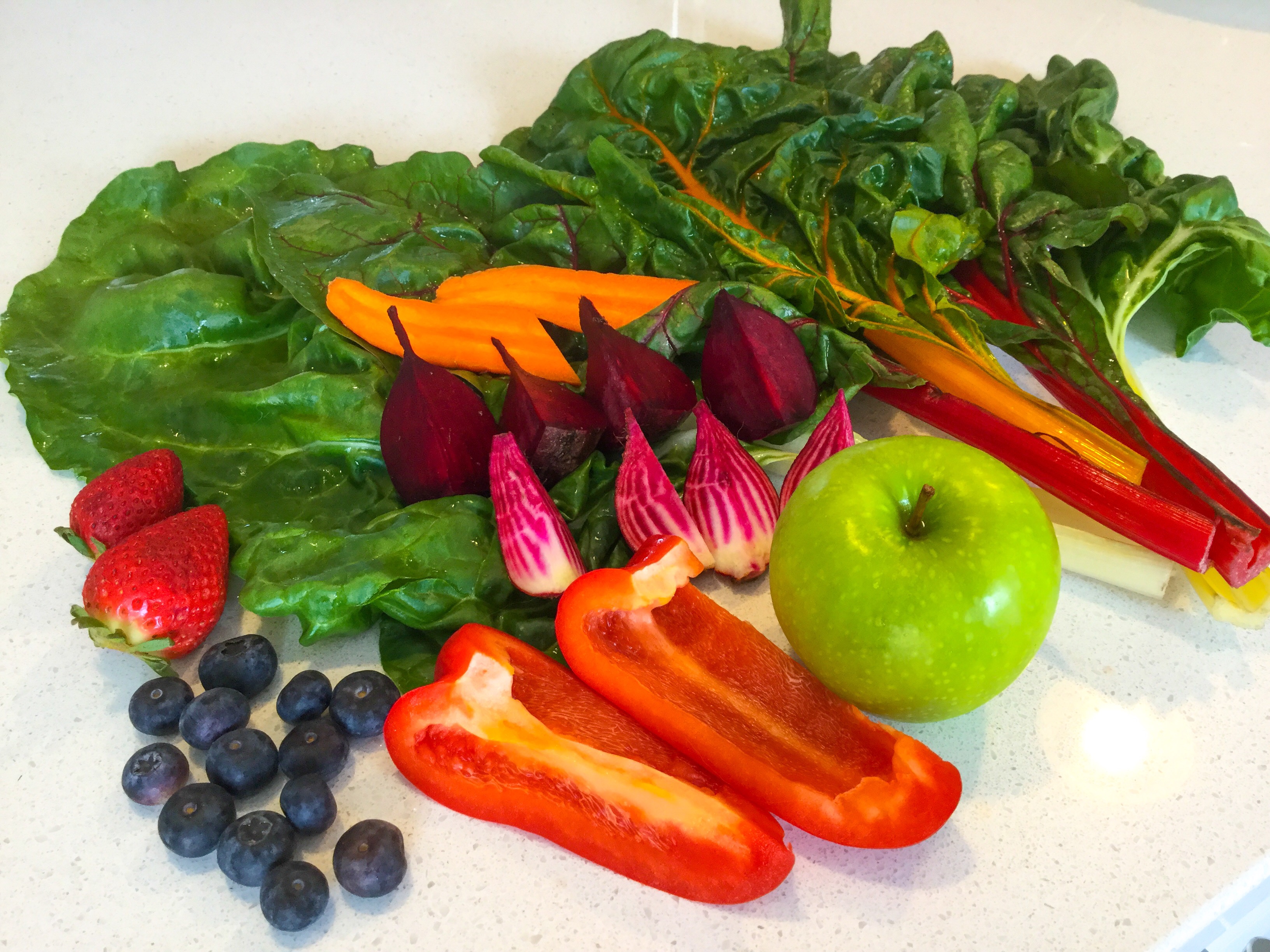
-
- Avoid chemicals, herbicides, pesticides and funky ingredients. Buy organic whenever possible, otherwise spray-free. Local is a great option since the food should be fresher and retain more of its nutrients since it hasn’t been on a truck for weeks before arriving at the store.
- Read ingredient lists on packaged food items. If you don’t recognize an ingredient or can’t pronounce it, chances are that your body won’t recognize it either and won’t know what to do with it. It’s best to leave that item on the shelf and look for an alternative.
- Eat unprocessed or minimally processed foods whenever possible. Whole potatoes that you bake, boil or steam yourself are far healthier than a bag of potato chips or French fries.
- Eat anti-inflammatory foods

-
- Anti-inflammatory foods are an athlete’s best friend. You put your body through a lot of wear and tear while training and participating in sports. Inflammation is a normal response, but chronic inflammation is a problem that can cause major health issues including injury and disease.
- Foods to eat:
- Dark leafy greens, e.g. kale, chard, collards, spinach, etc.
- Nuts and seeds, e.g. almonds, walnuts, pumpkin seeds, flax seeds, chia seeds, etc.
- Healthy fats, e.g. avocado, coconut oil, etc.
- Berries, e.g. raspberries, blueberries, goji berries, mulberries
- Beans and lentils
- Green tea
- Turmeric, ginger and cinnamon
-
- Foods to avoid:
- Fried foods
- Refined carbohydrates, e.g. white bread, white pasta, etc.
- Processed foods, e.g. chips, crackers, etc.
- Refined sugars, including sugary drinks (this includes many sports drinks)
- Processed meats
- Gluten
- Excess alcohol
- Foods to avoid:
- Keep a food journal
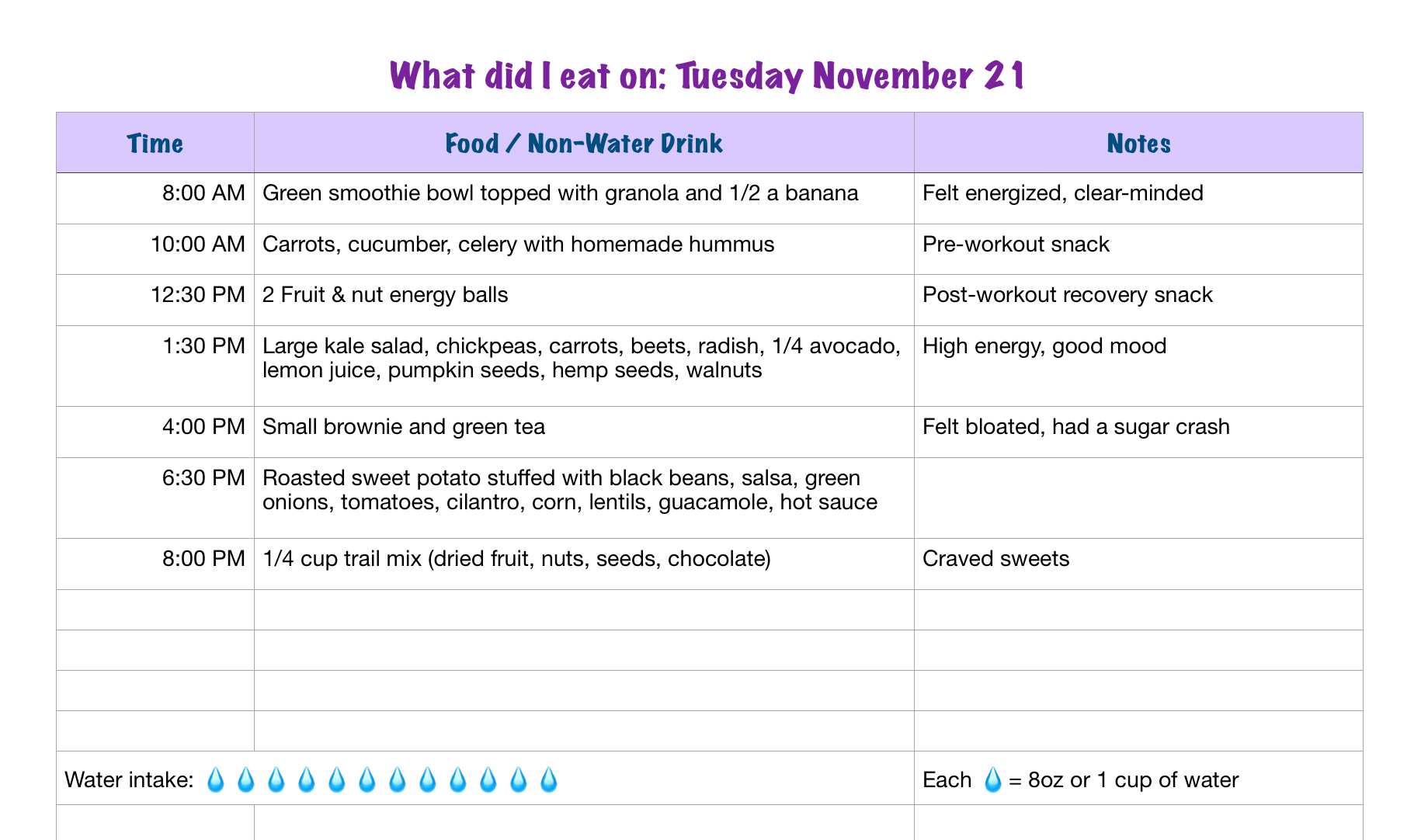
-
- Keep a log of everything you eat and drink. Note the times and how you feel. Over time, you will be able to look back and identify foods and drinks that make you feel good and foods that make you feel bad. Feeling good means you have high energy or you perform well at your sport after eating that food or you feel you’ve recovered quickly. Feeling bad might mean you feel tired, irritable, sore from workouts, bloated, or you may even experience headaches or cramping.
- Make eating fun!
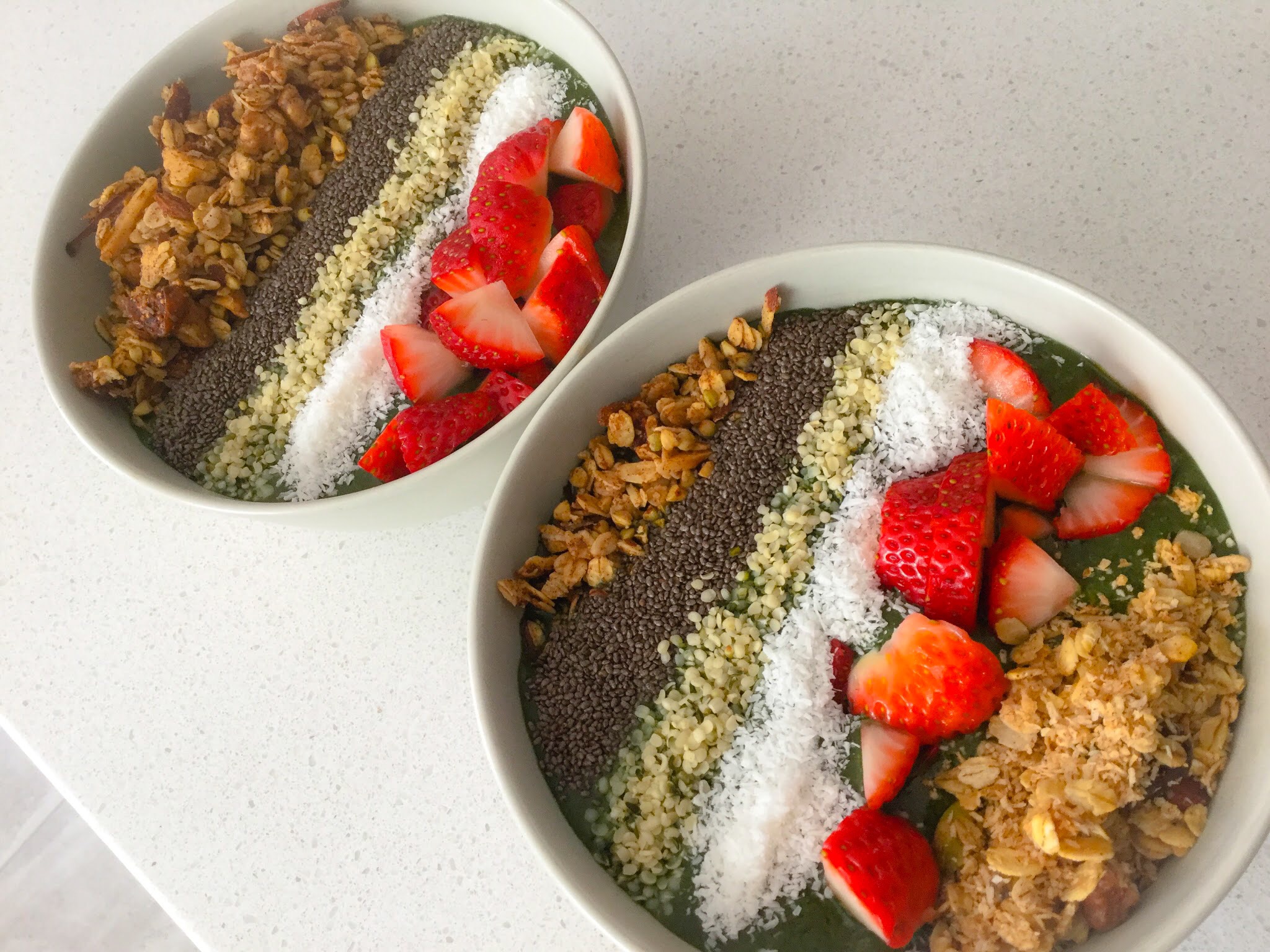
-
- Make foods that you enjoy and make them look great. Maybe that means making dinosaur-shaped whole-grain pancakes or fancy-looking power bowls sprinkled with sesame seeds and dulse flakes. Maybe it means plating your meals using your favourite dishes that you usually reserve for special occasions. Do whatever you find enjoyable.
- Variety is the spice of life! We often fall into a routine and make the same 4 meals over and over again. Try new recipes. Maybe commit to a new recipe per week, or if that’s too much, once a month. You might find some new favourites!
- Try new foods. Experiment with different foods that you don’t normally cook with. You’ll get a wider range of nutrients into your body and you won’t get bored eating the same thing all the time.
- Eat from the rainbow. Choose foods of different colours. Not only is this visually pleasing and fun, but it’s also healthy! Different colours mean different nutrients and the greater the variety of nutrients you take in, the better fuelled your body will be.
Here’s my go-to green smoothie recipe:
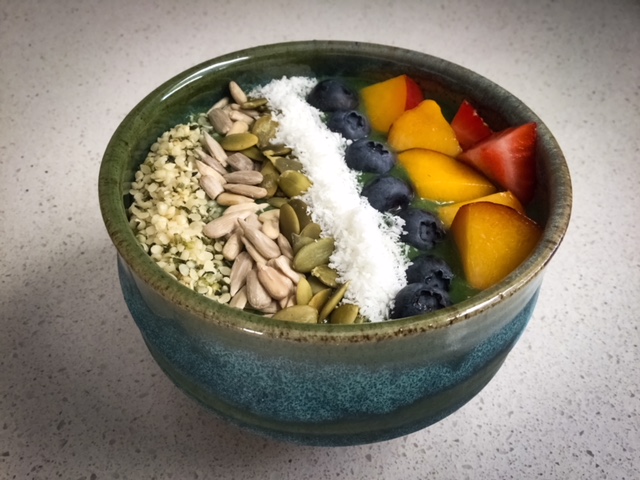
2 cups dark leafy greens (kale, spinach, chard, collards – whatever I have on hand)
1/2 cup frozen raspberries
1/2 cup frozen pineapple
1-inch knob of fresh ginger
2 tbsp goji berries (optional)
2 tbsp mulberries (optional)
2 tbsp hemp seeds
1 tbsp flax seeds
2-3 cups liquid (water, homemade herbal iced tea, coconut water, kombucha, fresh juice)
Put all ingredients into a high speed blender and blend until smooth.
I start with 2 cups of water and add more as needed. For smoothie bowls, I keep it a bit thicker and then pour the smoothie into a bowl, topping it with hemp, pumpkin and sunflower seeds, coconut and fresh fruit.
For smoothies in a glass, I make it thinner.
Store leftovers in an airtight jar (I use a mason jar) in the fridge. Keeps overnight. Makes 4 servings.
Optional superfood add-ins:
- Your favourite protein powder
- Spirulina
- Chlorella
- Maca
- Ashwaghanda
- Cinnamon
So that’s it – Five simple ways that you can improve your diet to ensure you get the most out of your fitness goals! Now go forth and be awesome!

